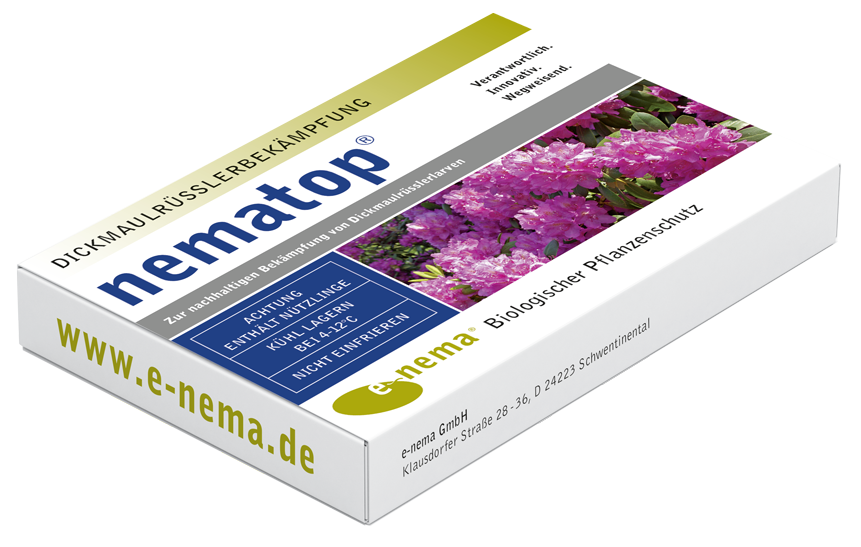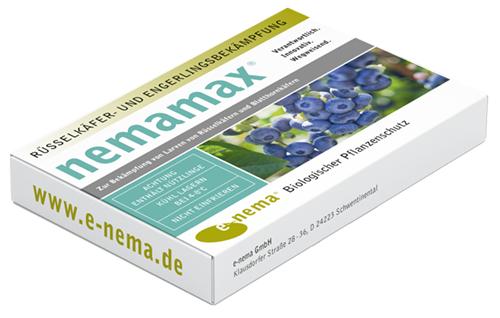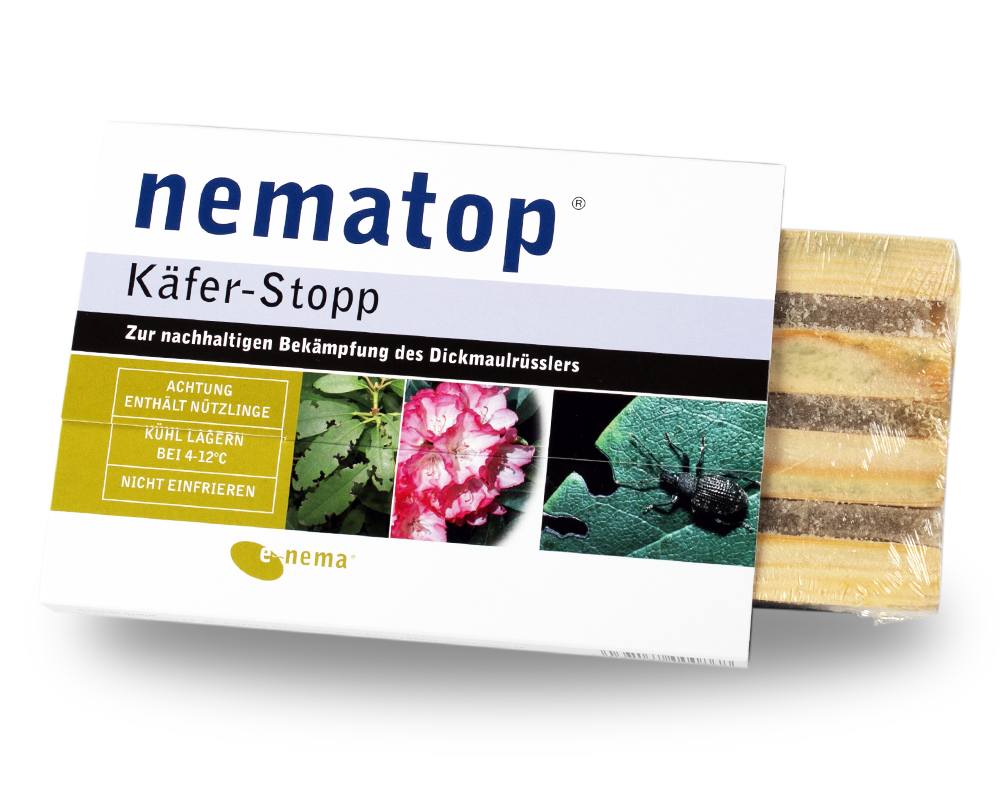Hedges
CONTROL PESTS IN YOUR GARDEN
There is hardly anything more beautiful than sitting in your own garden on a quiet and sunny day and enjoying the sight of your plants? It is all the more annoying when you discover that a few uninvited guests have taken up residence. A typical pest in domestic gardens is the black vine weevil, which is not only a visual nuisance but can also cause serious damage.
Damage caused by black vine weevils
A typical sign of a black vine weevil infestation in the garden is the so-called bay feeding, which can be observed on the leaves of various ornamental plants. This is caused by the adult beetles and is primarily a visual damage. Much more serious, however, is the damage caused underground by the larvae. These eat the roots of the plants, which can lead to serious damage and even the death of the plants.
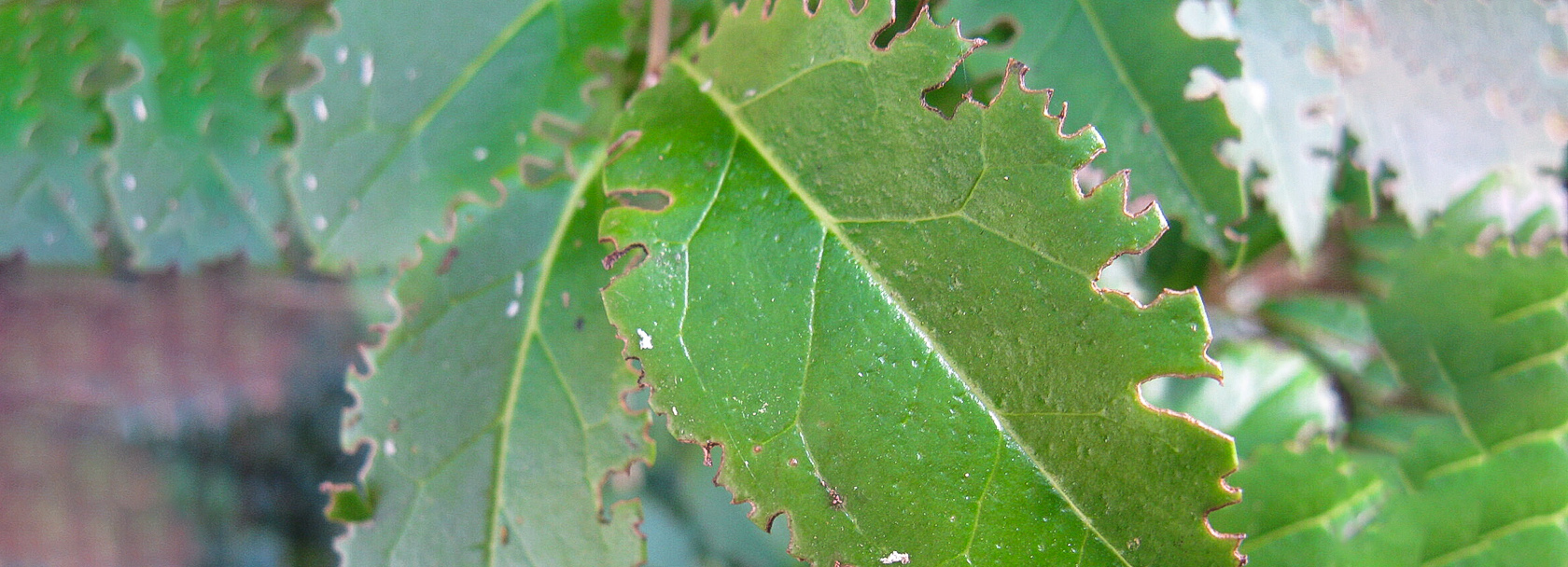
Which plants are attacked by the black vine weevil?
Mainly affected are ornamental plants such as rhododendrons, yews, lilacs, azaleas, cotoneasters, ivy, privet, cherry laurels and roses, as well as strawberries, vines and other soft fruits. Young plants are particularly at risk.
Life cycle of the black vine weevil
The black vine weevil lives for 1-3 years and lays up to 1,000 eggs during this time. The development from egg through several larval stages and pupa to adult beetle takes 1 year. There are only females, reproduction takes place by depositing unfertilised eggs in the soil or directly on the root neck of the plant. The hatching larvae then feed on the roots of the plants. Both adult beetles and larvae can overwinter, with the larvae having the better chances of survival.
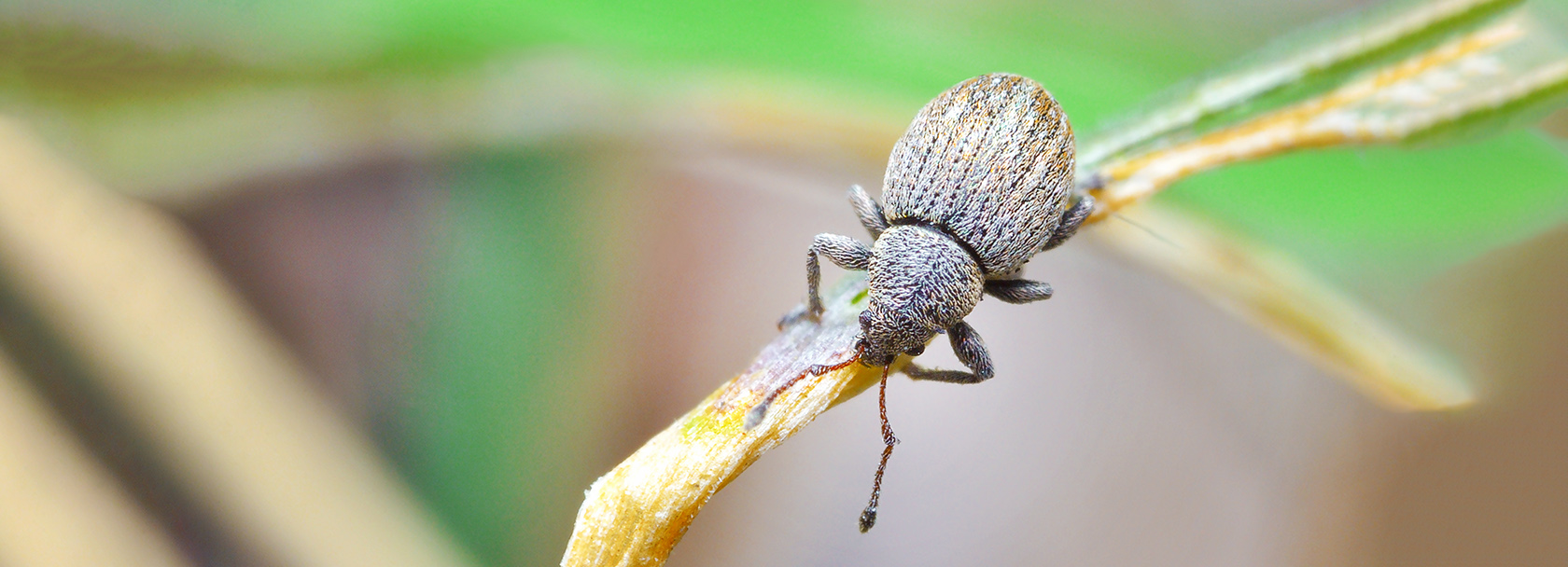
How can I control the black vine weevil?
Black vine weevils and their larvae can be controlled biologically and effectively with nematodes. Nematodes are tiny, thread-like soil organisms about 0.6mm long. The nematode species Heterorhabditis bacteriophora and Heterorhabditis downesi are specialised on black vine weevil larvae, among others, and can use them for their own feeding and reproduction. The nematodes are supplied alive in a powder. For application, they should be mixed with water exactly according to the package instructions and applied to the affected areas.
Adult beetles can be controlled with nematodes of the species Steinernema carpocapsae. Our product nematop® Weevil stop consists of a wooden trap containing a nematode gel. When the nocturnal beetle hides in the trap during the day, it comes into contact with the gel, which allows the nematodes to penetrate and kill it.
When can I control black vine weevils?
In spring the overwintering larvae, pupae and young beetles can be controlled with nematodes, in August/September the freshly hatched larvae in stages L2-L5. The beetle itself can be caught with the nematop® Beetle Stop trap from May to September.
Nematodes against black vine weevil larvae
nematop® contains nematodes of the species Heterorhabditis bacteriophora for biological control of black vine weevil larvae and pupae. The ideal time of application for nematop® is when the soil temperature is above 12°C for at least 4 hours a day.
Application period for nematop®: April/May and August/September.
If soil temperatures are still below 12°C, our product nemamax® can be used. nemamax® contains nematodes of the species Heterohabditis downesi and can be applied at soil temperatures as low as 8°C. This means that the season for controlling chiggers is extended. This extends the season for controlling black vine weevils and their larvae and more damage can be prevented.
Application period nemamax®: February-April and September-November
